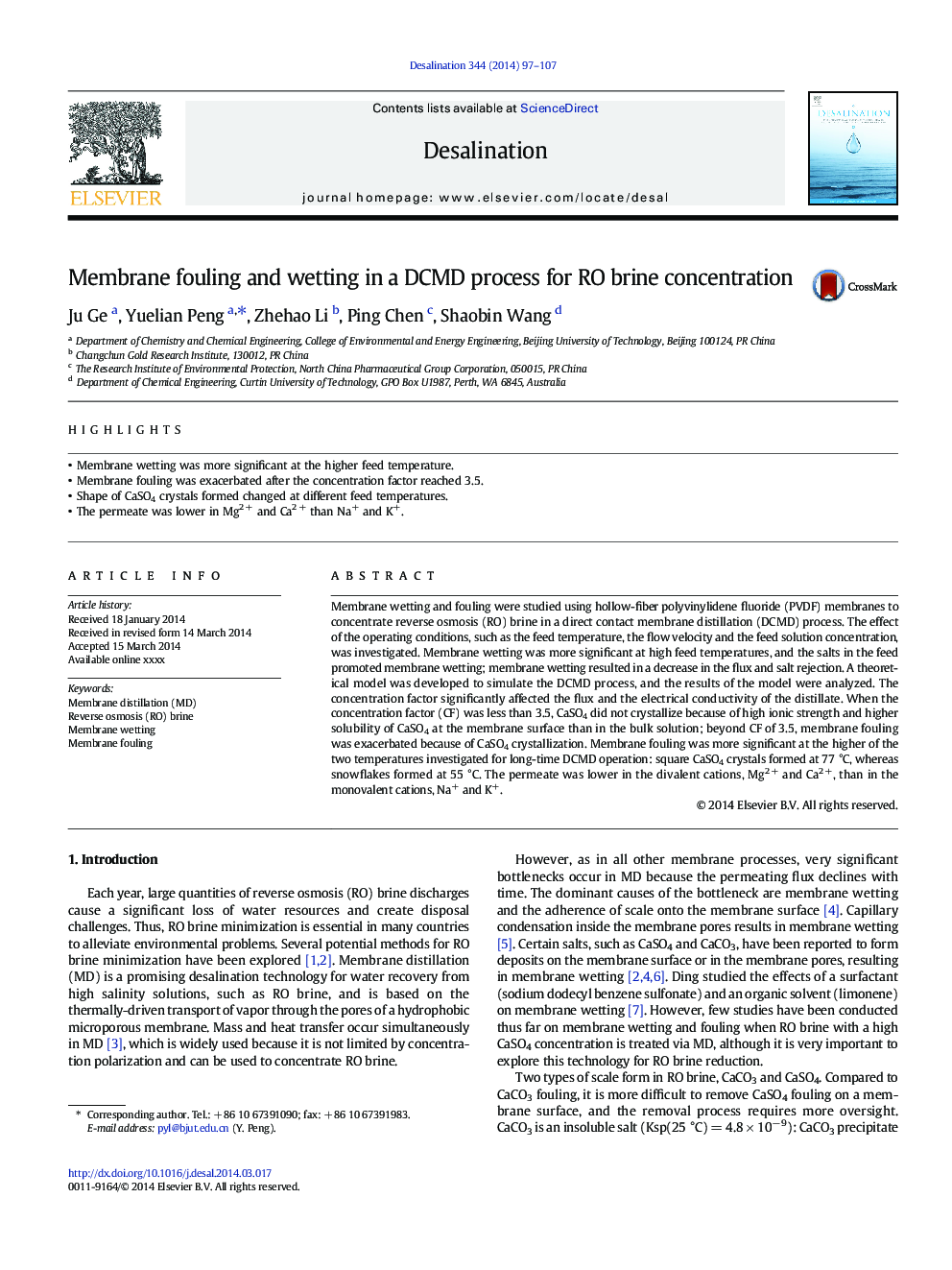| Article ID | Journal | Published Year | Pages | File Type |
|---|---|---|---|---|
| 7008451 | Desalination | 2014 | 11 Pages |
Abstract
Membrane wetting and fouling were studied using hollow-fiber polyvinylidene fluoride (PVDF) membranes to concentrate reverse osmosis (RO) brine in a direct contact membrane distillation (DCMD) process. The effect of the operating conditions, such as the feed temperature, the flow velocity and the feed solution concentration, was investigated. Membrane wetting was more significant at high feed temperatures, and the salts in the feed promoted membrane wetting; membrane wetting resulted in a decrease in the flux and salt rejection. A theoretical model was developed to simulate the DCMD process, and the results of the model were analyzed. The concentration factor significantly affected the flux and the electrical conductivity of the distillate. When the concentration factor (CF) was less than 3.5, CaSO4 did not crystallize because of high ionic strength and higher solubility of CaSO4 at the membrane surface than in the bulk solution; beyond CF of 3.5, membrane fouling was exacerbated because of CaSO4 crystallization. Membrane fouling was more significant at the higher of the two temperatures investigated for long-time DCMD operation: square CaSO4 crystals formed at 77 °C, whereas snowflakes formed at 55 °C. The permeate was lower in the divalent cations, Mg2 + and Ca2 +, than in the monovalent cations, Na+ and K+.
Related Topics
Physical Sciences and Engineering
Chemical Engineering
Filtration and Separation
Authors
Ju Ge, Yuelian Peng, Zhehao Li, Ping Chen, Shaobin Wang,
